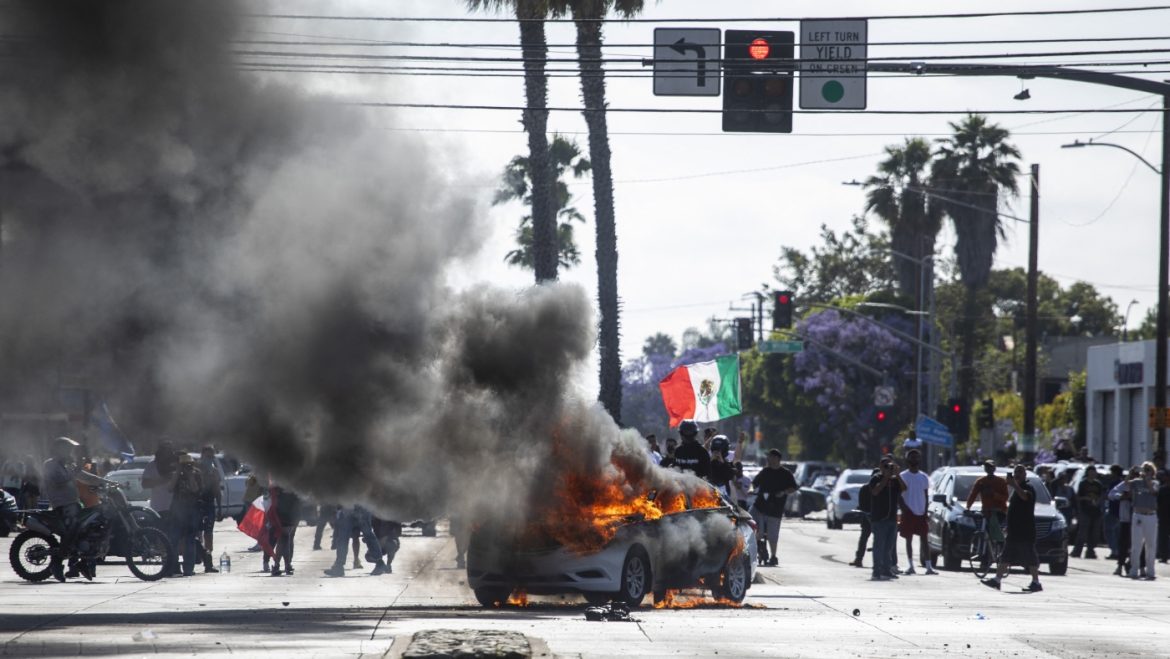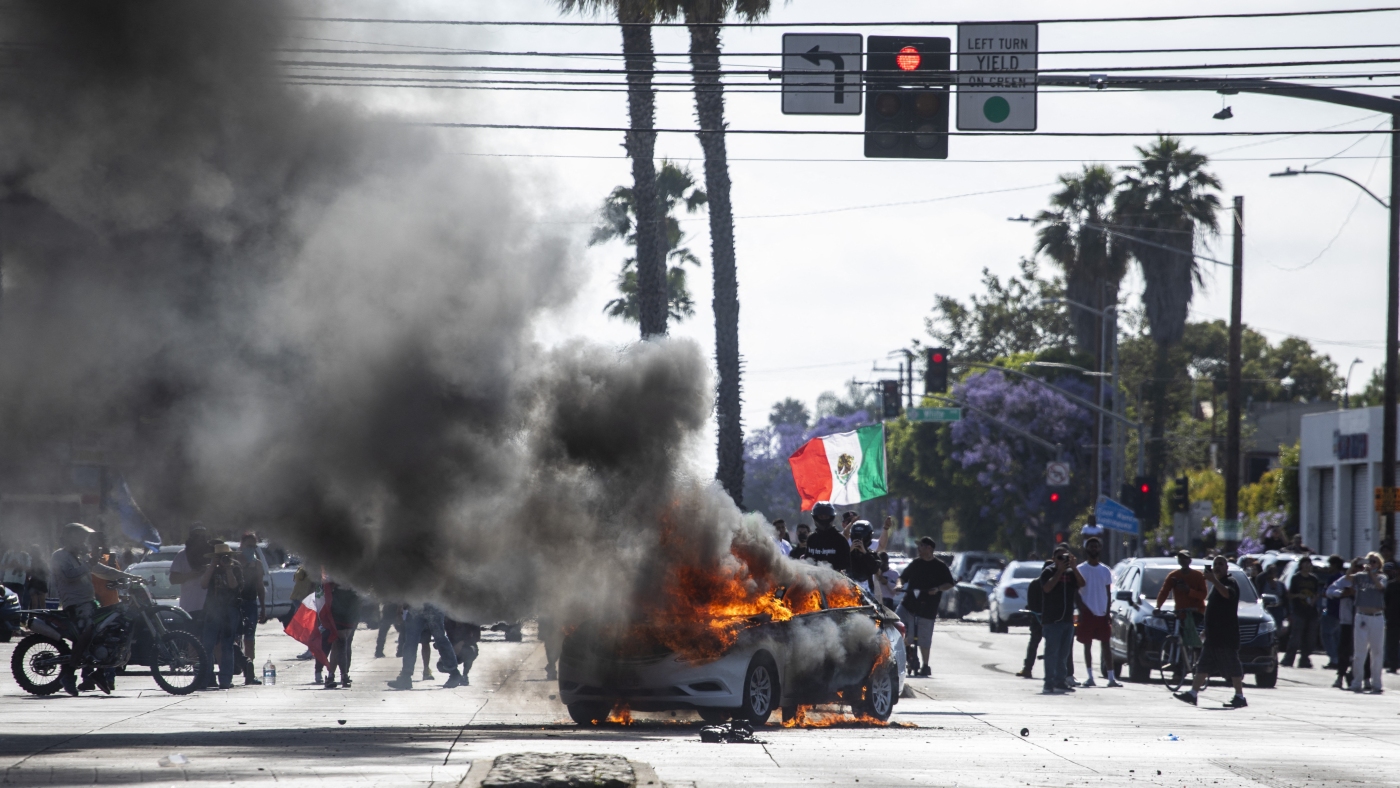The Weekend-Long Immigration Protests in Los Angeles: A Closer Look
Over the recent weekend, Los Angeles became the focal point of intense immigration-related protests triggered by federal immigration raids. The unfolding events involved passionate demonstrators, a firm law enforcement response, and stirred a political showdown heightened by the deployment of the National Guard. This report delves into the motivations, progression, and implications of the protests, providing a structured overview of what transpired and its broader context.
The Spark: Federal Immigration Raids and Immediate Reactions
The protests originated in direct response to comprehensive immigration raids conducted by Immigration and Customs Enforcement (ICE) in various parts of Los Angeles County. These raids resulted in at least 118 immigrant arrests over the span of the week, igniting outrage within immigrant communities and activist groups.
The city witnessed multiple protest events, including a significant demonstration in the city of Paramount, about 15 miles south of downtown LA, signaling the widespread geographical and social impact of these federal actions.
Law Enforcement Response: Tactics and Controversy
The Los Angeles Police Department (LAPD) and the L.A. County Sheriff’s Department maintained that their roles were confined to clearing streets and safeguarding public safety, deliberately refraining from direct participation in immigration enforcement activities. However, tensions escalated as law enforcement ordered protesters to disperse overnight, resulting in confrontations with demonstrators.
The weekend saw at least 56 arrests made during these confrontations, as authorities sought to balance crowd control with managing heightened emotions on both sides. The protests extended into a third day, highlighting the persistence and determination of the demonstrators.
Political Dimensions: National Guard Deployment and Intergovernmental Conflict
A significant wrinkle in the weekend’s events was President Trump’s decision to mobilize the National Guard to Los Angeles to address the unrest, an action undertaken reportedly without the support of California’s governor. This deployment added a militarized aspect to the situation and underscored the tension between federal and state authorities over immigration enforcement policies.
The presence of National Guard troops around key locations, such as the Los Angeles Federal Building, symbolized the federal government’s hardline stance on immigration enforcement, fueling further protester anger and increasing the complexity of law enforcement-civilian interactions.
Public Sentiment and the Broader Debate on Immigration
The protests encapsulate broader national debates on immigration in America, where policies and enforcement tactics provoke starkly divided public opinions. The demonstrators voiced concerns over the humanitarian and social impacts of mass detentions and raids, emphasizing community solidarity and calls for more compassionate immigration reform.
Meanwhile, law enforcement agencies and federal authorities emphasized legal authority and public safety, highlighting the challenges of balancing enforcement with civil rights. The weekend’s events reflected a microcosm of the ongoing ideological and political battleground surrounding immigration in the United States.
The Cultural Backdrop: A Brief Mention of the Tony Awards
Coinciding with the intensity of the protests was the 78th Annual Tony Awards held at Radio City Music Hall, hosted by Cynthia Erivo. While no single production dominated the ceremony, the arts event offered a striking contrast — a moment of celebration and cultural recognition amid the social unrest dominating national headlines. This intersection underscores the multifaceted nature of societal events occurring simultaneously.
Conclusion: Reflections on an Unsettled Moment
The weekend-long immigration protests in Los Angeles shed light on a city and nation wrestling with deeply entrenched issues of immigration policy, civil rights, and governance. The clash between demonstrators and federal authorities, compounded by political tension over the National Guard’s presence, illustrates the profound complexity and emotional intensity surrounding these matters.
As Los Angeles and the broader United States continue to confront these challenges, the events invite reflection on the balance between law enforcement and humanitarian concerns, the dynamics of federal-state relations, and the enduring power of public protest as a catalyst for social dialogue and potential change.


